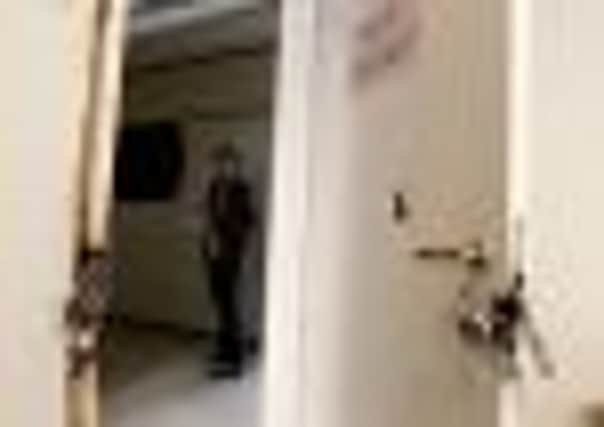Bullet holes a stark reminder of massacre on Utoya island


Journalists were permitted for the first time yesterday to visit the tiny, heart-shaped island, owned by Norway’s Labour Party youth organisation, where 69 people died from gunfire and drowning after a bombing in central Oslo took eight lives in the 22 July attacks by Breivik.
Several bullet holes still mark the interior of a cafeteria building where many youths were killed trying to barricade themselves in against Breivik, firing an automatic rifle.
Advertisement
Hide AdAdvertisement
Hide AdLabour Party youth leader Eskil Pedersen said the building, the island’s largest, would probably be demolished as part of a plan to “reclaim” the island for young activists.
“Probably the largest building on the island will be torn down and rebuilt … because a lot of terrible events happened there,” Mr Pedersen said on the island.
“The island means very much to very many people. No island in Norway has formed the political landscape more than Utoya. We have the clear aim to return to Utoya.”
Yesterday’s visit to the island coincided with expressions of regret from Norwegian authorities over their handling of the attacks, in which a total of 77 people died.
“All of us, including I, must express regret for mistakes,” justice minister Knut Storberget told the daily Aftenposten, in the clearest acknowledgement by the government to date that some criticism of the police response was justified.
The harshest criticism has centred on the fact it took an hour for police to apprehend Breivik after the first reports of gunfire on Utoya, about 25 miles north of Oslo, where more than 500 Labour Party youths were at summer camp.
Breivik confessed to both the island shootings and the Oslo bombing, which he intended as punishment of the country’s Labour Party for backing Muslim immigration.
Mr Storberget took responsibility for official “shortcomings” after the attacks – including the fact police gave incorrect information to some families of the victims – but said he had no plans to resign.
Advertisement
Hide AdAdvertisement
Hide AdPlans are afoot to build a monument to those who died on the island. Martin Henriksen, a former Labour youth chairman who helps administer Utoya, said 32 million Norwegian crowns (about £3.5m) has been raised to refurbish island amenities and create the monument.
“It’s not so much the physical damage as the emotional weight that is difficult to manage,” he added.
During more than 75 hours of police questioning, Breivik has expressed no regret for his actions, and investigators said they still believe he acted alone.
Police in Oslo say they want to interview a man called Alan Lake, who they believe is a key figure in Britain’s anti-Islamist English Defence League (EDL), to find out if he may have been an ideological source of inspiration to Breivik.
“Alan Lake is an obvious person we would like to speak to,” Oslo police prosecutor Paal-Fredrik Hjort Kraby said.
But he added: “At this point in the investigation there is no indication that anyone knew about his [Breivik’s] plans.”
The English Defence League said that Lake had “absolutely nothing to do with the EDL”. Lake could not be reached for comment yesterday, but has previously denied being a senior member of the EDL.